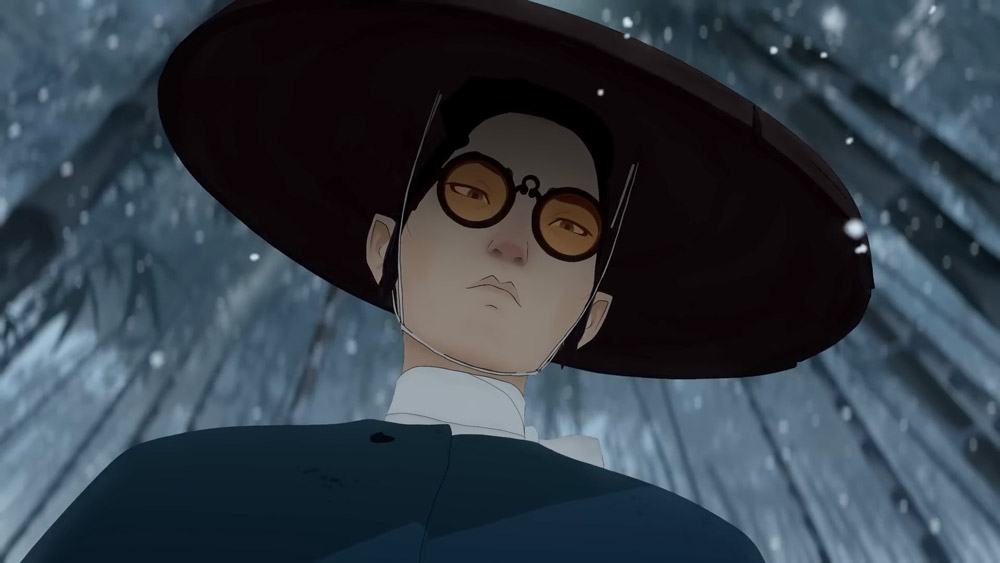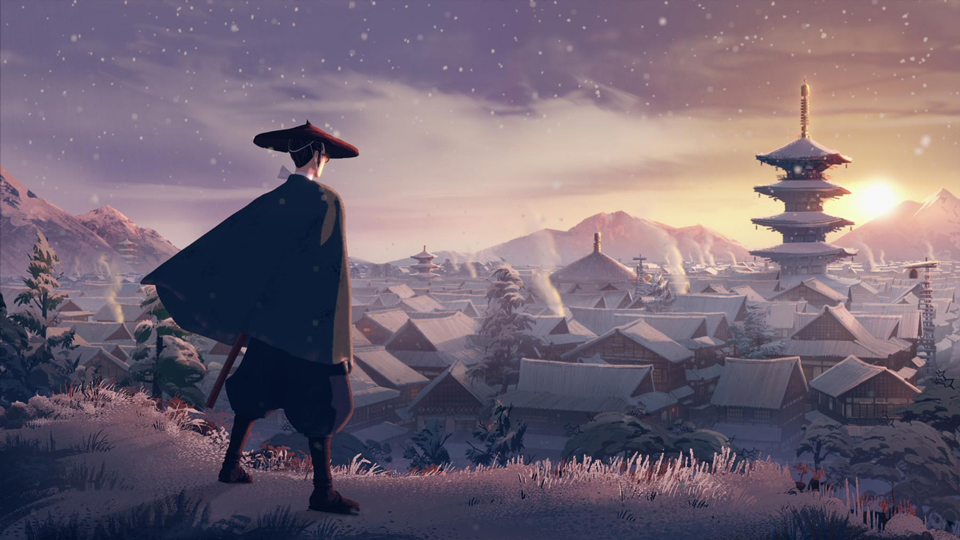What work have you done on “Blue Eye Samurai’’?
O.L: Blue Spirit studio was in charge of part of the pre-production and all of the production of the animation, from the layout to the delivery of the final shots prepared for calibration in Los Angeles. “Blue Eye Samurai’’ deploys a 2D aesthetic inspired in part by Japanese animation in both character design and acting. Our studio has developed a specific 3D technique that makes a more aesthetic 2D rendering. We have successfully produced other series in the same style, like “The Mysterious Cities of Gold’’ and some episodes of Marvel series “What If…?’’, which were based on the same process. But we have had the will to go even further in the quality of our renderings, this is why Netflix contacted us and trusted us with “Blue Eye Samurai’’.

How did your collaboration with the American platform go?
Netflix teams developed the series. As for us, we supported and carried out their vision. We have completed significant animation work, with in-depth studies on the samurai’s movements, weapons handling, combat technical gestures, but also details such as the way kimonos warp during a fight! American teams came to Angoulême with sabers and kimonos to give a demonstration to the animators. This resulted in a fairly unique production, which reached its target: an adult audience and a graphic culture nourished by Japanese animation.
What kind of recognition comes with prizes like the Annie Awards?
There is a bit of an “American dream’’ side. Especially since, beyond the studio as a whole, individuals were also nominated: animators, special effects supervisors... Being nominated for the Annie Awards is like being on top of the world. These awards give an international dimension to the studio, to our teams, and help to show that our work has contributed to the success of “Blue Eye Samurai’’. Blue Spirit keeps following the way it paved several years ago by developing this style between 2D and 3D, which is becoming more and more sophisticated. This recognition at the Annie Awards is the culmination of twenty years of work.
Can you tell us more about the production process at Blue Spirit?
The studio management and part of the pre-production are located in Paris. Most of the work, animation, modeling and texturing, is done in Angoulême, where we produced a significant part of “Blue Eye Samurai’’ with the help of our studio in Montreal. The heart of the industrial force is located in Angoulême: there is incredible know-how on site, with our 3D picture production process that enables us to make a 2D rendering. I believe that this is a real source of growth for the animation industry: animation that escapes from the “shackles of youth” to turn towards an adult or young adult audience. The recent successes of “Arcane’’ and “Blue Eye Samurai’’ prove that this is a winning strategy for the future of animation. From a technical and artistic point of view, opening up to an older audience also gives us the opportunity to develop very different styles. Youth animated series imply a lot of boundaries while the perspective of a more adult audience allows us to dare.
Blue Spirit celebrates its 20th anniversary this year. What is the studio’s place in French animation?
Blue Spirit is one of the leaders in animation in France, particularly in the production of series. We have a very strong production activity here as we have been working for the French market for more than two decades, with projects like “Gigantosaurus’’ for Cyber Group Studios, “Oum the White Dolphin’’ with Media Valley, and even “Jean-Michel Super Caribou’’ for Autour de Minuit. With “What if…?’' for Disney, “Gremlins’’ for HBO or “Blue Eye Samurai’’ for Netflix, the studio is taking on an international dimension. Our know-how is recognized in North America and Canada, so our studio in Montreal is very important. This is why we decided to strengthen it.
What about the studio’s work on movies?
We are currently developing six feature films, including one that was presented at the Mifa Pitches at the Annecy festival this year: “The Ballad of Yaya’’. It is a 2D film, adapted from a Chinese graphic novel and directed by Franco-Chinese director Hefang Wei. We are going more and more into 3D animated film projects aimed at the general public.
How far are you in the production of Netflix’s “Blue Eye Samurai’’ Season 2?
We will begin to work on it this summer. We have already recruited the teams. The division of the production will be more balanced between our Angoulême and our Montreal studios. We are looking at approximately twenty-four months of work to design and produce this second season.
“Blue Eye Samurai’’ benefited from the Tax Rebate for International Productions (TRIP)


